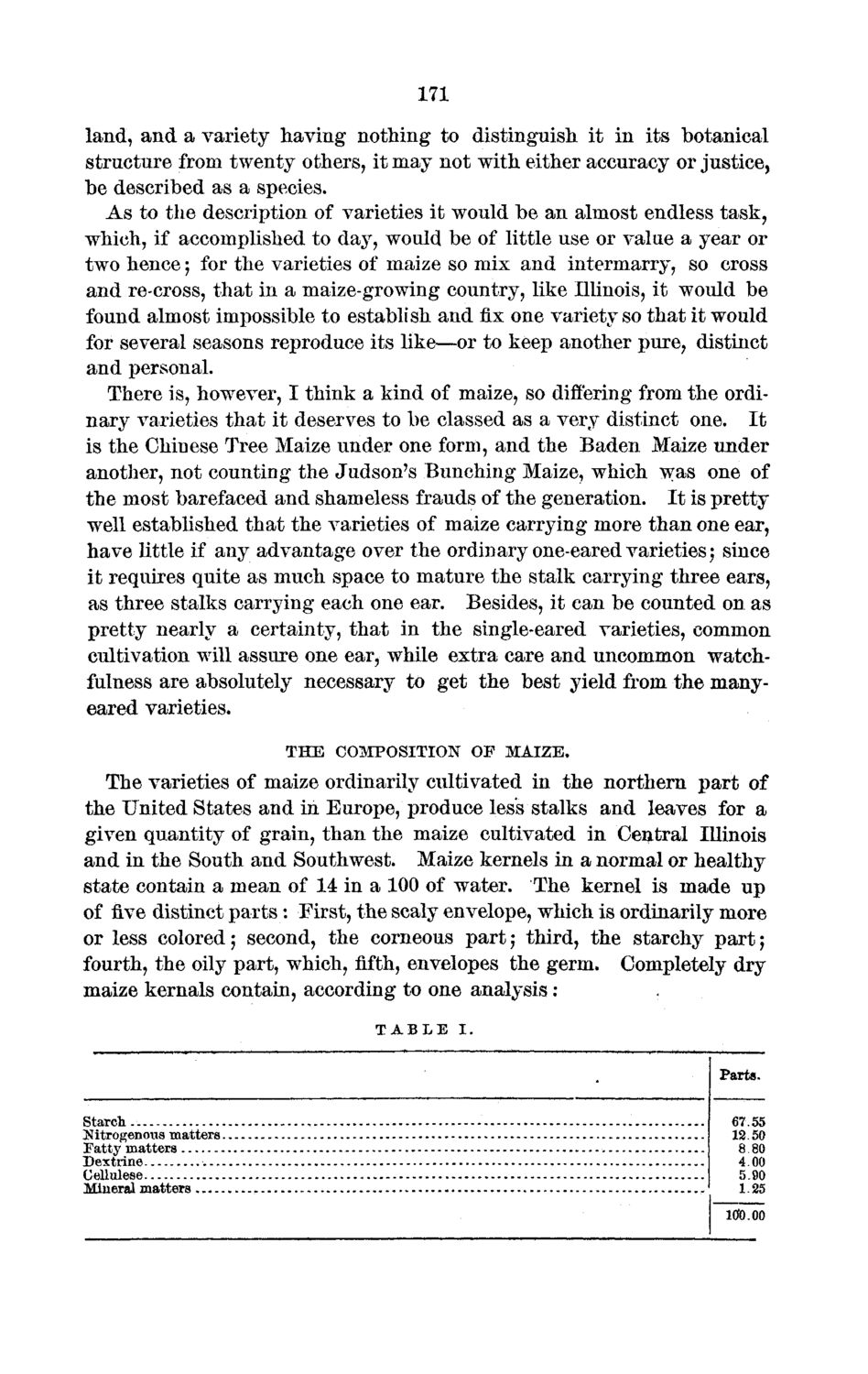| |
| |
Caption: Board of Trustees Minutes - 1872
This is a reduced-resolution page image for fast online browsing.

EXTRACTED TEXT FROM PAGE:
171 land, and a variety having nothing to distinguish it in its botanical structure from twenty others, it may not with either accuracy or justice, be described as a species. As to the description of varieties it would be an almost endless task, which, if accomplished to day, would be of little use or value a year or two hence; for the varieties of maize so mix and intermarry, so cross and re-cross, that in a maize-growing country, like Illinois, it would be found almost impossible to establish and fix one variety so that it would for several seasons reproduce its like—or to keep another pure, distinct and personal. There is, however, I think a kind of maize, so differing from the ordinary varieties that it deserves to be classed as a very distinct one. I t is the Chinese Tree Maize under one form, and the Baden Maize under another, not counting the Judson's Bunching Maize, which was one of the most barefaced and shameless frauds of the generation. I t is pretty well established that the varieties of maize carrying more than one ear, have little if any advantage over the ordinary one-eared varieties; since it requires quite as much space to mature the stalk carrying three ears, as three stalks carrying each one ear. Besides, it can be counted on as pretty nearly a certainty, that in the single-eared varieties, common cultivation will assure one ear, while extra care and uncommon watchfulness are absolutely necessary to get the best yield from the manyeared varieties. T H E COMPOSITION OF MAIZE. The varieties of maize ordinarily cultivated in the northern part of the United States and in Europe, produce less stalks and leaves for a given quantity of grain, than the maize cultivated in Central Illinois and in the South and Southwest. Maize kernels in a normal or healthy state contain a mean of 14 in a 100 of water. The kernel is made up of five distinct parts : First, the scaly envelope, which is ordinarily more or less colored; second, the corneous part; third, the starchy part} fourth, the oily part, which, fifth, envelopes the germ. Completely dry maize kernals contain, according to one analysis: TABLE I. Parts. Starch Nitrogenous matters. Tatty matters Dextrine Cellulese Mineral matters 67.55 12.50 8.80 4.00 5.90 1.25 10*0.00
| |